
30 Days in Australia
I spent most of October in Australia - good fun!
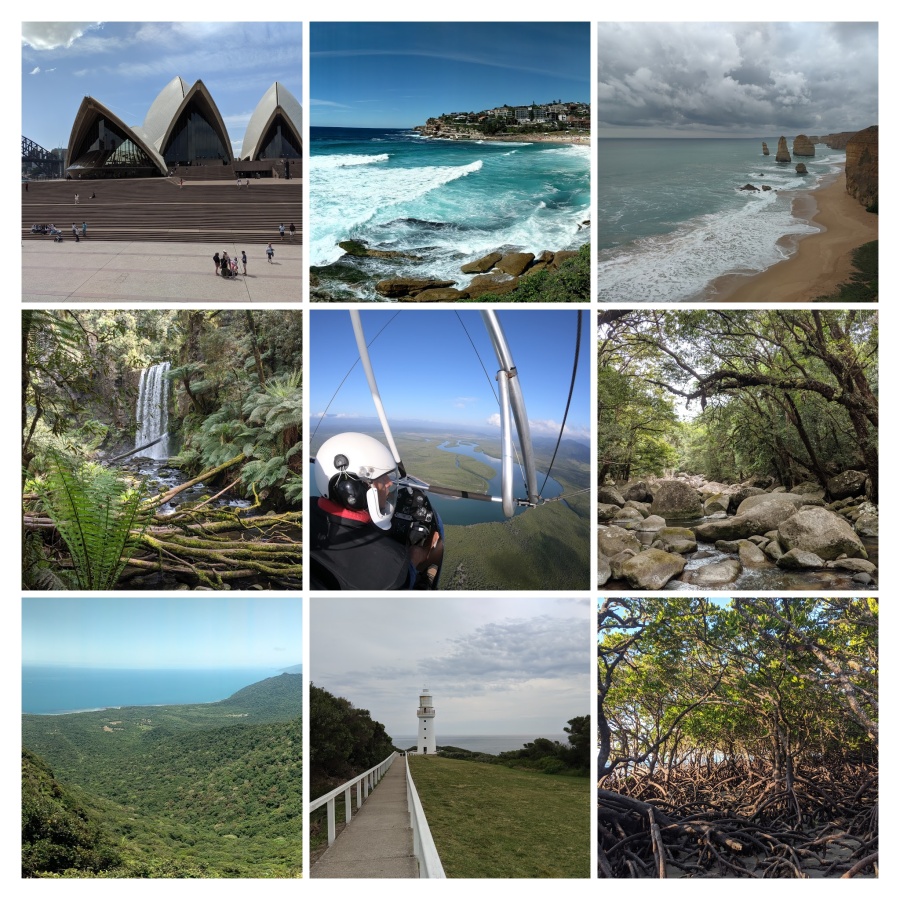
By the time the first Europeans arrived in the 17th century, indigenous Australians had inhabited the continent for some 65,000 years. Australia’s eastern half was claimed by Britain in 1770, and initially settled by the relocation of criminals and undesirables.
That was a long time ago, though. Today, Australia has the 10th highest per-capita income, and “the third-highest human development index and the eighth-highest ranked democracy globally, the country ranks highly in quality of life, health, education, economic freedom, civil liberties and political rights, with all its major cities faring well in global comparative livability surveys.” Australia’s Human Development Index (HDI) is 0.939 - “very high”, and third in the world (behind Norway and Switzerland). wikipedia
Queensland
Queensland covers the northeast corner of Australia, and provides great access to what drew me here most: the Great Barrier Reef.
The reef is amazing - it just seems to go on and on forever. I saw a reef shark, a stingray, and a whole lot of fish.
The city of Cairns is often referred to as the “Gateway to the Great Barrier Reef”, and it’s very apparent in the town - almost everything revolves around the reef here. There are day-cruises, overnight “liveaboards”, helicopter trips, snorkeling trips, diving trips, microlight trips… anything reef-related you can think of, you can probably find it in Cairns.
I actually opted to head further north, to the town of Port Douglas. The drive from Cairns to Port Douglas is beautiful. It’s like California’s Highway 1 - a winding road, separated from the beautiful sandy beach by a thin tract of jungle.
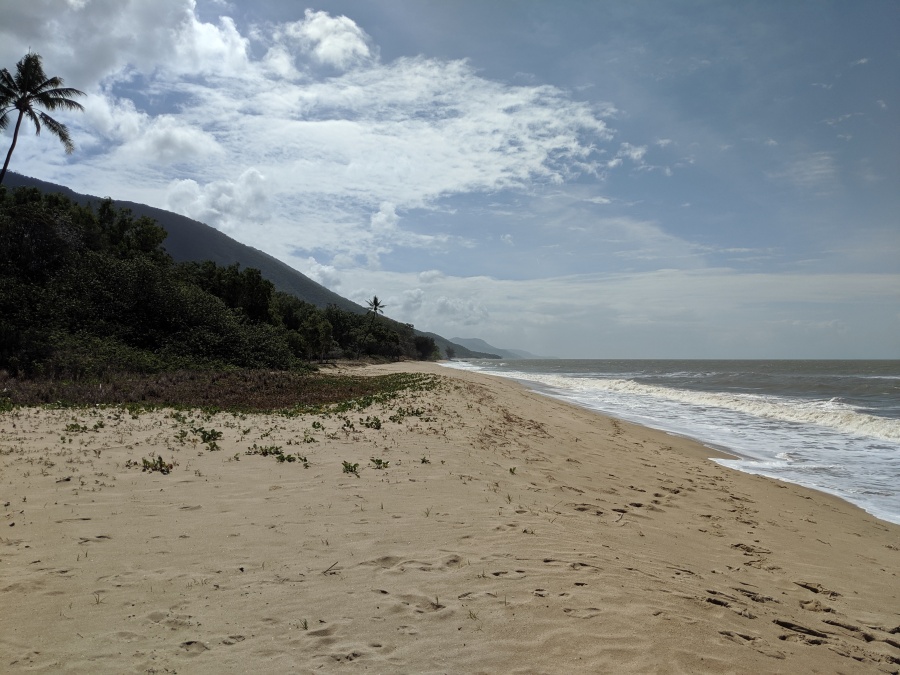
Port Douglas is small and highly seasonal - full of people during the high season, and a ghost town during the off-season. I arrived towards the tail end of the high season. During the high season, the town gets so busy that it’s really hard to find a regular place, and so many people working in town for the high season spend the entire time here in one of the town hostels. This does have its perks - like the time I was sitting around, trying to figure out where to go for dinner, when a girl who works at the local aussie pie shop (which closes at 4pm) showed up at the hostel with a huge plastic bag full of pies, saying, “You want some pies? Have two, or three, or four!” I had three, and they were all tasty.
I stayed in a dorm room with four beds at Coral Beach Lodge. One of my roommates was Jessica, who had been in town since the beginning of the busy season some six months prior. Jessica works at the local brewery, and volunteers on dive boats doing food prep and the like in exchange for free dives.
I asked Jessica if she’s thinking about making a career out of diving. She says no; she’ll probably keep it as a hobby. “I think I like beer almost as much as I like diving”. She goes quiet for a while, clearly thinking hard. “I’m glad I live in a world where I don’t have to choose,” she says, and smiles.
Port Douglas also revolves around the reef. It’s like a smaller, more charming version of Cairns (though don’t tell the locals I said that - they all like to look down on Cairns as a dull tourist trap).
The town has a beautiful Four Mile Beach. You’re only supposed to swim on a short section of the famous beach because there are crocodiles in the water. On that short section, lifeguards look out for them (including using drones), and would (hopefully) let you know when you need to get out of harm’s way.

One of my days in Port Douglas, I took a “microlight” flight over and around Port Douglas and the Daintree Rainforest. This is basically a couple of seats and a 500ish cc engine with a propeller mounted under a hang-glider wing. It’s surprisingly quick and agile! It’s controlled directly by moving the wing with respect to the seats - no joysticks here.
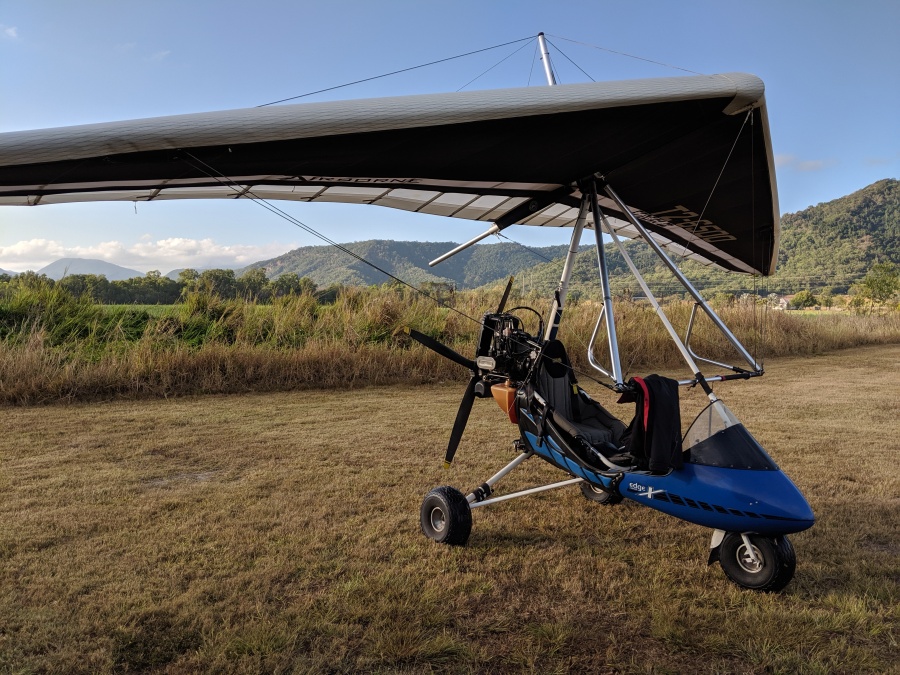
We flew between about 1,000 ft. up and… well, about 3 feet up, just above the beautiful, long, flat beaches north of Port Douglas.
It’s a great way to see the area. Mark, the pilot, says that they take the microlight camping sometimes - they just land at a nice spot on the beach and camp there. That sounds amazing.
“How do you like my office?” Mark asked me once we were flying over the beach. “Best office view I’ve ever seen,” I told him, which is true. I told him about my days of working in windowless offices at JPL and KeyMe; he said, very matter-of-factly, and with a tone of voice suggestive of a lack of comprehension as to why anyone would subject themselves to that: “I don’t think I could handle that.”

From the sky just south of Port Douglas, Mark pointed out to me an old folks’ home. “You see that creek next to it?” he asked. “A couple of years ago, a 70-year-old woman with dementia walked out of the home to go for a swim in the creek. A four-meter croc ate her.”
“Jeez,” I said, “that’s terrible.”
“Not really,” said Mark, sounding offended and vehemently defiant. “It’s not a bad way to go. You go into shock very quickly, and don’t feel a thing after that. First thing they do is drown you. Remember, she had dementia. People who are all there mentally don’t go swimming in any water where you can’t see clearly what’s in the water.”
Back on the ground around Queensland, I saw multiple guys walking around a supermarket in just board shorts and flip-flops, no shirt. Some gals also, with bikini tops. No one batted an eye; it’s just part of the laid back style here along the coast. It was the same in my hostel in Port Douglas, though there I figured it was because the hostel tailored to the outcasts and misfits. I remember a time back home in La Crescenta, when after a long workout at the high school track, my buddies and I went to get frozen yogurt - all without shirts on. No one said anything, and we got our froyo. It felt good.
The world’s too uptight sometimes. I still remember being denied entrance to a bar in New York because I was wearing shorts. “Get outta here,” I’d said, “it’s 90 degrees and humid as hell!” He didn’t care. A couple years later, on another hot day, I went to a red carpet event with my girlfriend back in LA, wearing shorts. Part of the idea was to see if she would say anything. She didn’t - and thus passed the test. Nor did anyone else at the red carpet, incidentally - which shows one of the ways in which LA is better than New York.
Daintree Rainforest
The other big local claim to fame is the Daintree Rainforest - the oldest rainforest in the world.
It’s beautiful - green, lush rainforest stretching all the way to beautiful, white-sand beaches, where you can almost hear a sirens’ song inviting you for a leisurely swim. Be careful not to heed it, though - the waters are full of crocodiles just waiting to eat you for lunch. There are signs warning everyone to avoid getting in (or even near!) the water everywhere.
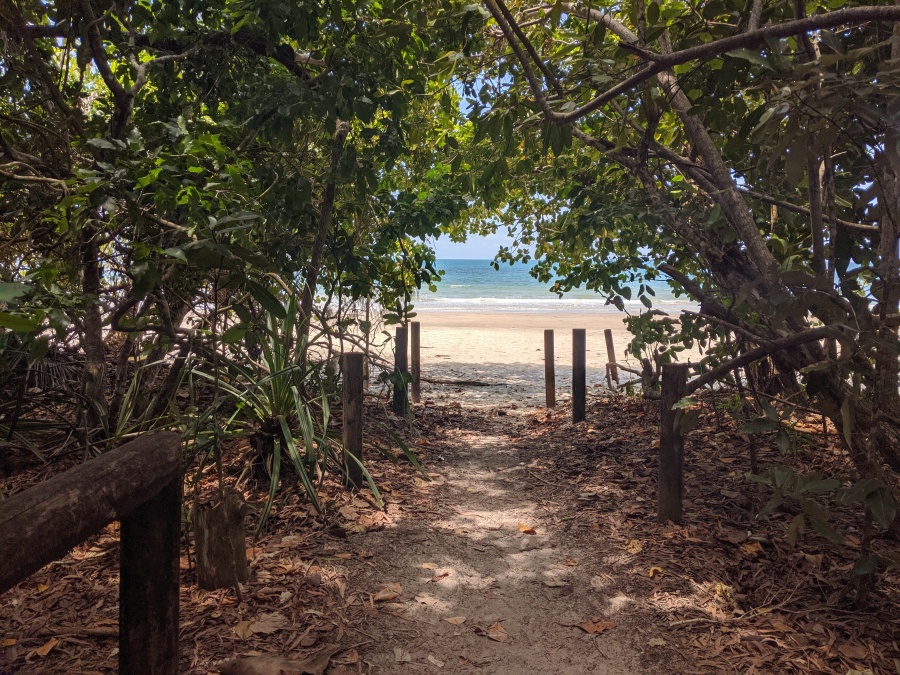
I hiked up to Mount Sorrow from the coast. It’s only about 650 meters above sea level, and only about a 4.5km trek, but it’s a steep, mad scramble up the jungle to get there, and the heat and humidity take their toll. The view at the top, though, is worth it:
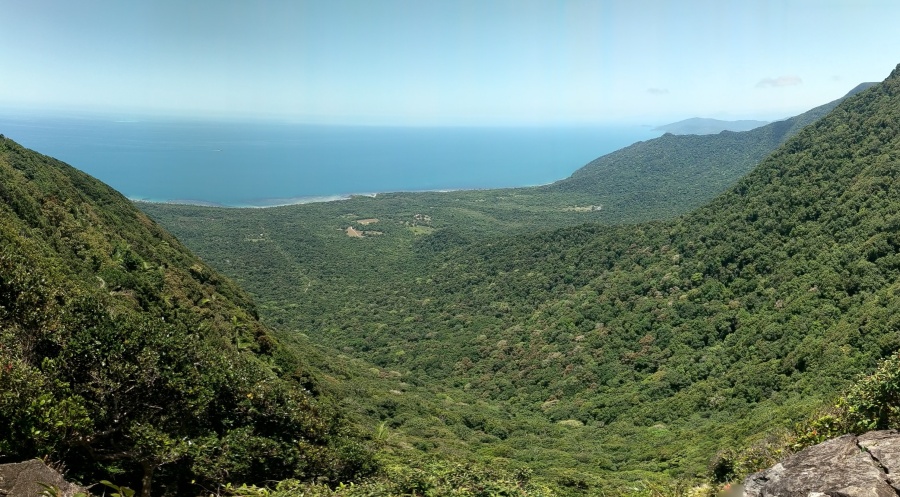
At the top, I met a few young folks who invited me to join them for dinner at their campsite, which I gladly accepted, offering to bring beer. I figured - yes, we are in the middle of the rainforest, but I’d seen a few general stores along the route, and they must have beer, and surely they can’t mark it up that much. Boy was I wrong - I paid $33 AUD (about $23 USD) for a six-pack of Coronas. But hey, once you tell someone you’re showing up for dinner with beer, you just can’t show up without beer.
Like many of the other young people I’d met, these folks were in Australia on a one-year working visa, paying for their year abroad as they went, working mostly in the service industry. It’s a great program that Australia has there - I’d met people from all over Europe, the US, Canada, and South America, all doing some variation on that theme. They get to spend a year abroad in a really chill country (and non-native speakers get to perfect their English!), while Australia gets a supply of cheap labor and a global network of ambassadors for the country. Win-win.
Why don’t we have this in the US? Is it because we are afraid that these people would take Americans’ jobs? Why isn’t that fear there in Australia? Interestingly, immigrants make up about 33% of the total population in Australia, and (only?) 14% of the total population of the US (source).
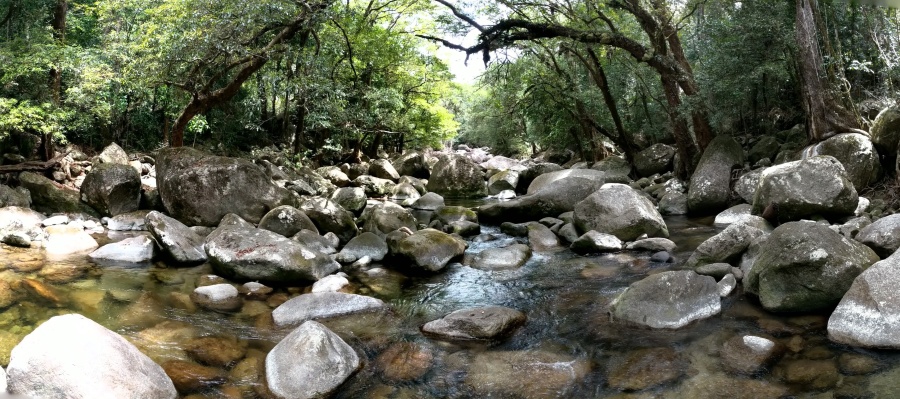
One of my roommates at the hostel in Daintree was Boyce Bush, retired former employee of the US Bureau of Land Management in Fairbanks, Alaska. Boyce spends much of his time travelling around the world, mostly to great snorkeling destinations (hence Daintree and the Great Barrier Reef) and taking photos. These he self-publishes into magazines - you can find them online here. I was sceptical that people would buy the magazines, and indeed Boyce says he’s sold maybe 25 at the market in Fairbanks, and maybe another couple online. But hey, it makes for a great tax-writeoff and a fun hobby.
One of the interesting tree species that thrive here in Daintree is the Strangler Fig. Seeds of the fig germinate not in the ground, but rather on a branch of another tree. From there, the fig rapidly shoots roots on down, to get water and nutrients out of the ground, while also shooting up vines and branches upwards, in search of the sun and its energy. Over time, as the fig grows - upward and downward - the roots fuse together where they meet, and gradually strangle their host tree - hence the name strangler fig. Eventually the host tree dies and rots away while the strangler figs are left behind, which results in some unique sculpture-like creations in the rainforest:

I also took a tour up the Daintree River in search of crocs. We saw four, ranging in size between 50 cm (a one-year-old) and 3 meters (a nine-year-old). Because it is spring and warm here, the crocs mostly stay in the water, so they’re hard to spot. It’s much easier to find them in the winter, when they need to climb out of the water to catch some rays in order to warm up. Duly noted.
Here’s a fun fact about crocs that I hadn’t known previously - they can live to be a 100 years old! Their chances of doing so are slim, of course. On the other hand, once they get to about 2 meters in length, they’re the top predator here (unlike those poor crocs in the Amazon, who must always fear Jaguars) - so past a certain age their biggest threat is humans.
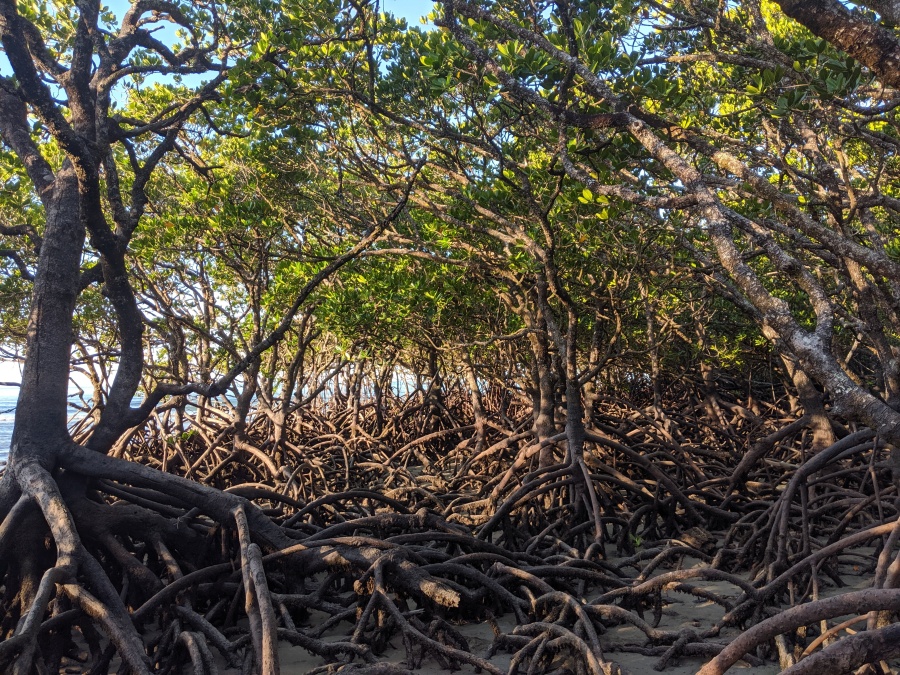
One of my favorite things about the rainforest is the sounds. You can hear many different animals making their sounds from all around. It has a very calming effect on me. Until, that is, some buzzing insect starts flying around me. That is perhaps one of my least favorite things about the rainforest. I suppose the two go hand in hand.
In the part of Daintree where I spent my five days, there is no cell or internet service. The time away from the internet and connection with the great mass of humanity in the middle of the rainforest heightened even further the solo-traveler’s yearning for human connection. I did a lot of hiking, reading, and writing. At times I felt like Jack Nicholson in The Shining, banging away furiously while his connection to humanity slips away, and his sanity with it.
That was cured quickly back south in Cairns, where I met up with my friends Patrick and Kat.
In Cairns, I’d love to give a shout out to the Petit Japan restaurant. The food is good, but perhaps even better are the smoothies. The smoothies are so good that even when we were having dinner at another restaurant nearby, I jogged off to Petit Japan to grab a smoothie. The owner, Aurelien (who co-owns and co-runs the place with his Japanese wife, Yuko) told me he’d bring me the smoothie to the restaurant where we were eating - and he did! That’s going beyond the call of duty. Based on my sampling, I seriously think Petit Japan makes the best smoothies in this part of Queensland.
Sydney
After Queensland, we took a flight south to Sydney. Sydney is a beautiful city - lively, clean, safe, and cultured.
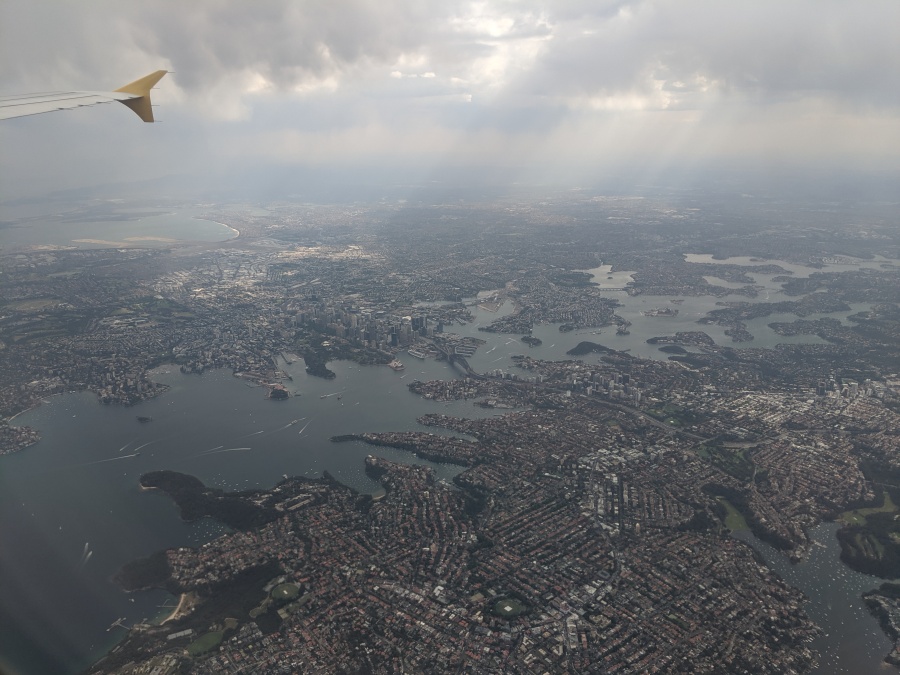
I took a hike up to a pylon of the Sydney Harbour Bridge, getting great views of the city, including the famous Sydney Opera House.
The Opera House is beautiful, even more than I’d expected, and it’s placed in a prominent spot, taking up a luxurious amount of space. Photos don’t quite do it justice.

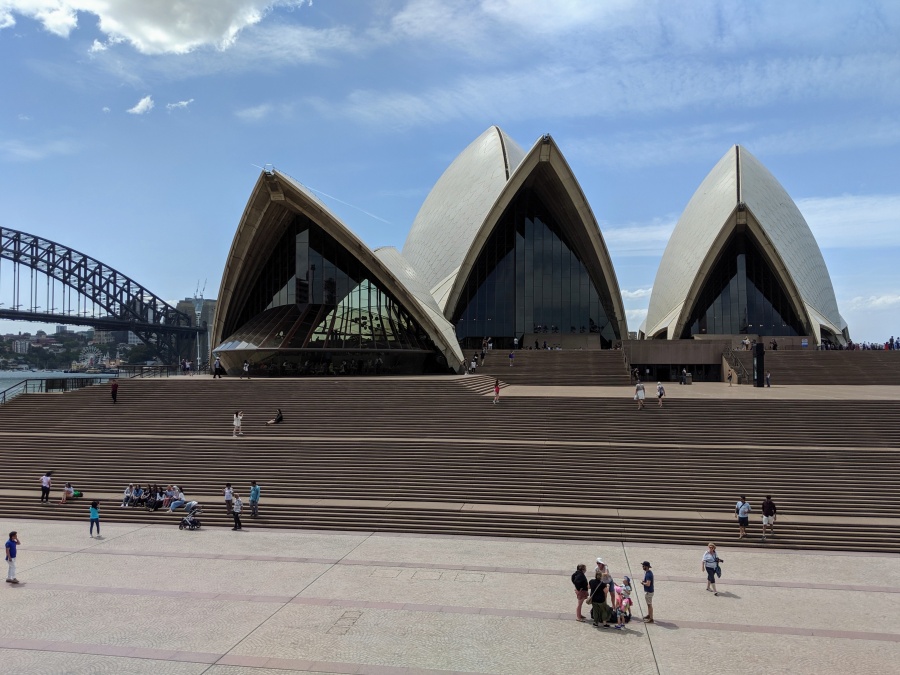
We saw a play at the Opera House called Natives Go Wild, which was… unique - not quite the high brow stuff one might picture when you tell them you saw a play at the Sydney Opera House.
After the play, we watched England kick the All Blacks’ ass in the rugby world cup semifinal in a pub full of drunk, singing English fans. Good times.

There’s a nice part of Sydney called Manly. How does a place get a name like “Manly”? Well, according to wikipedia, it was named by Captain Arthur Philip for “the confidence and manly behaviour” of the indigeneous people living there. “While scouting for fresh water in the area, Phillip encountered members of the clan, and after a misunderstanding he was speared in the shoulder by one of the clan; to his lasting credit, the progressively-minded Phillip ordered his men not to retaliate”
Melbourne
Both Sydney and Melbourne have a great vibe. They combine the best of European density, walkability, and public transit with an American openness, optimism, and looking to build the future rather than preserve the past.
In fact, both cities are seeing quite a bit of construction:
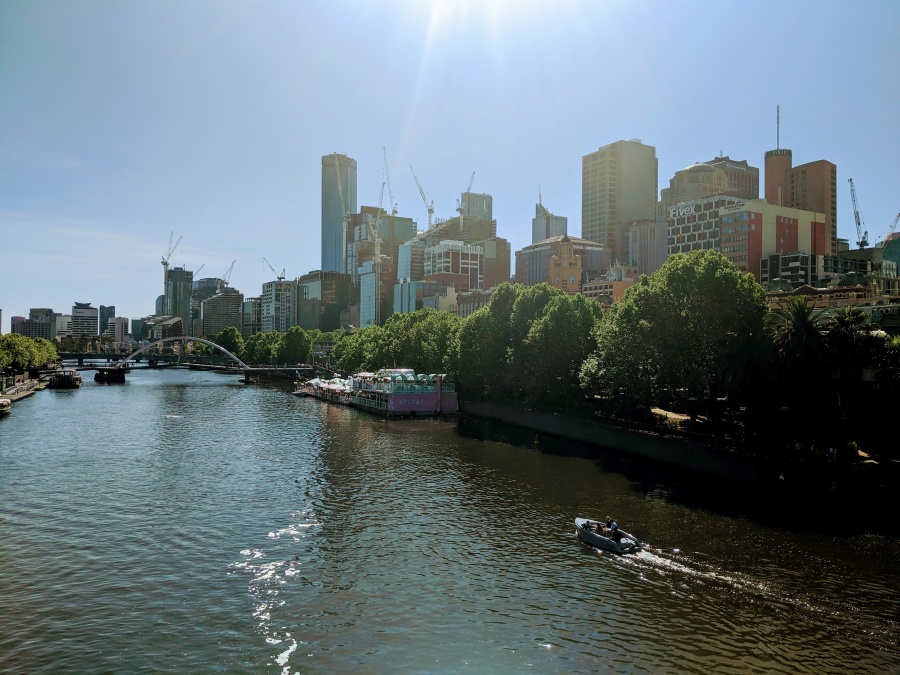
In some ways Melbourne even reminded me of New York. It felt like… if New York grew up, got a lot more space, chilled out and gave up some of its vices, maybe it’d be Melbourne. Don’t get me wrong - there’d be both upsides and downsides to that, and it wouldn’t be the New York that so many of us have a passionate love-hate relationship with… but it would still be pretty cool. Maybe Melbourne is that pretty cool place. I even found a decent place for New York-style bagels (though the heathens put dill in their cream cheese, and for that reason do not earn the Krystof recommendation). Also, disappointingly, Melbourne did not seem to have much going on a Wednesday night, while New York has a lot going on literally every single night.
Melbourne has a respectable “Street Art” scene - wander down the right back alley, and you might find some art… in addition to the trash you’d expect:
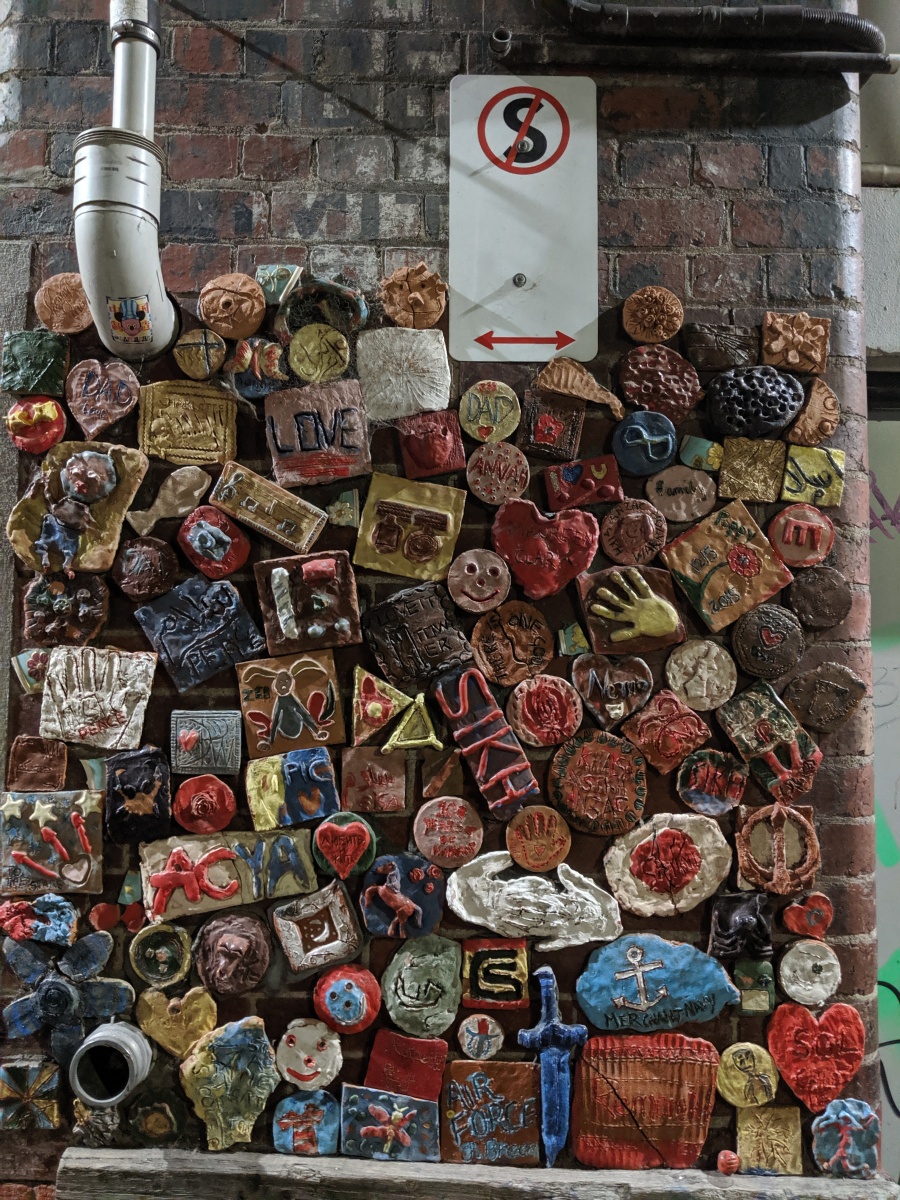
In Melbourne I met Joe from London, another one of the folks in Australia on work visa for a year. Joe had left the UK to travel Asia, and spent the first year traveling around 8 different countries, seeing each one “in quite a bit of detail”. When he ran out of money, he figured he should make some more - and the easiest place to do that was Australia. He’s worked in construction, as a farm hand, and more. He says he made $26 AUD per hour (about $18 USD) as a farmhand here - well more than farmhands in the US. That’s why the US farm system relies on illegal immigrants… while Australia’s can rely on backpackers.
When he can get the work, Joe also does what he calls “robot process automation” using UiPath - basically gluing together different pieces of software using flowcharts in order to automate repetitive tasks. How does Joe feel about automating away people’s jobs? Good, he says, because it frees up people from the drudgery of repetitive tasks and allows them to do more creative, interesting work. “Yes, I said, “but will all those people be able to find that creative, interesting work?” No. That’s why, Joe says, we need to find a way to tax the robots, and use that money for a universal basic income (UBI). This is something that Bill Gates has been saying for a while. I might argue that there might better ways to generate the needed tax revenue (ones that wouldn’t create a brake on automation), but I wouldn’t argue that it’s time to start figuring out how to do UBI.
In Melbourne, I serendipitously wandered into a dinner with some of the top speakers to attend the Society 4.0 Forum, whose mission was to “explore the exciting opportunities that exist through the use of data analytics and technology facilitating community collaboration, and to explore the future of work and the impact of Industry 4.0.” OK, actually my friend Patrick, who was a speaker at the conference, invited me to join the dinner. Walking in really did feel serendipitous, though, and the connections and conversations had over the dinner sparked a lot of great ideas. Thanks, Pat - that was a great evening.
The Great Ocean Road
After Melbourne we took off south to The Great Ocean Road and the Great Otway and Port Campbell National Parks. Probably the biggest attraction there is the Twelve Apostles:

We also saw a koala bear run across the road right in front of our car and scurry up a tree. They can be surprisingly limber and agile when they want to.
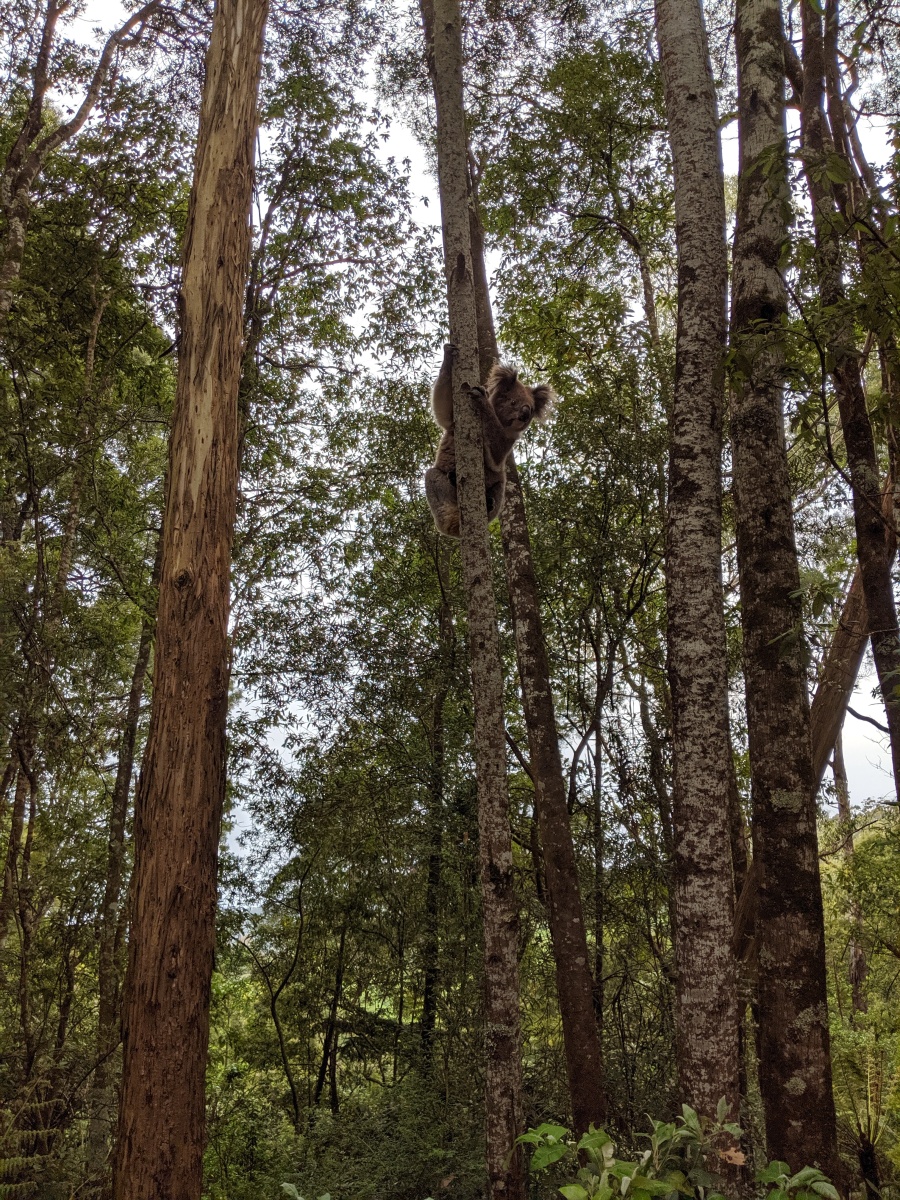

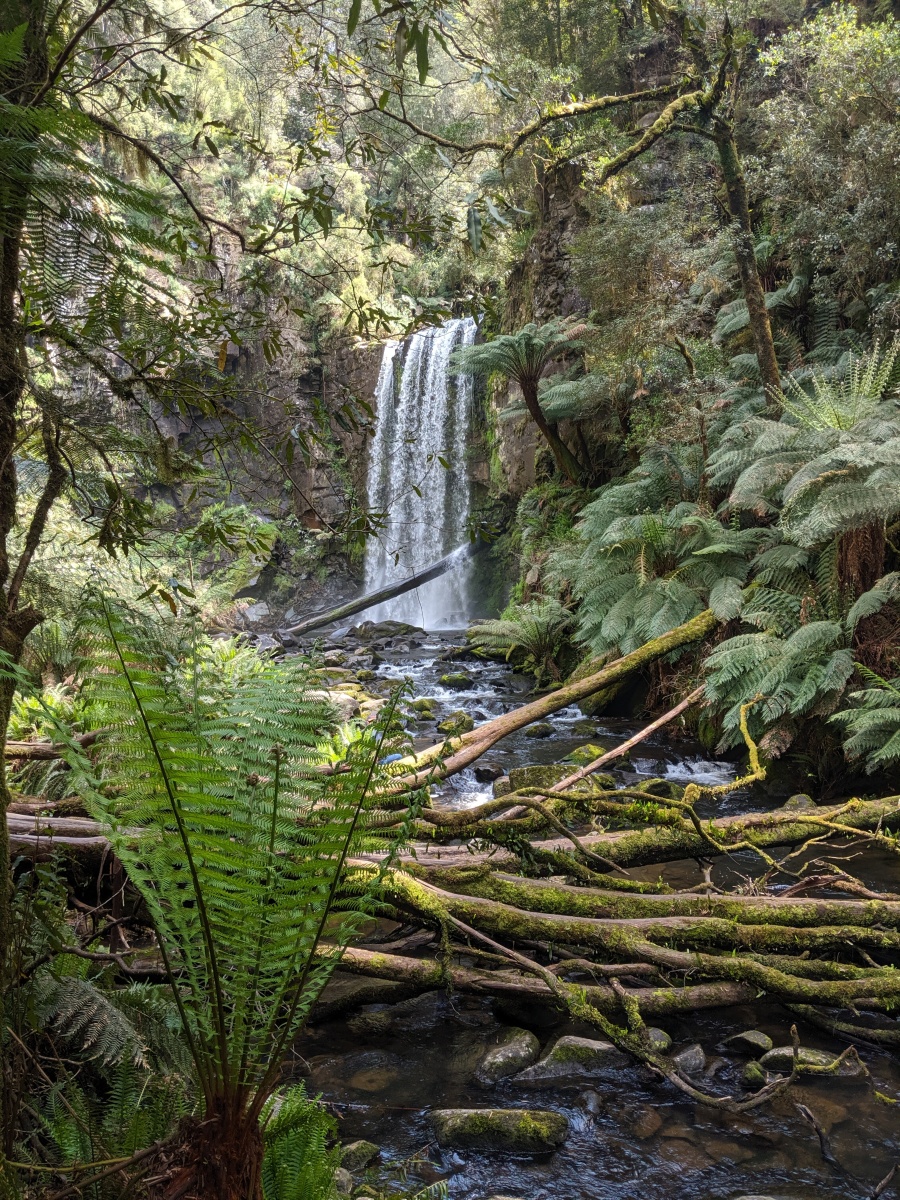
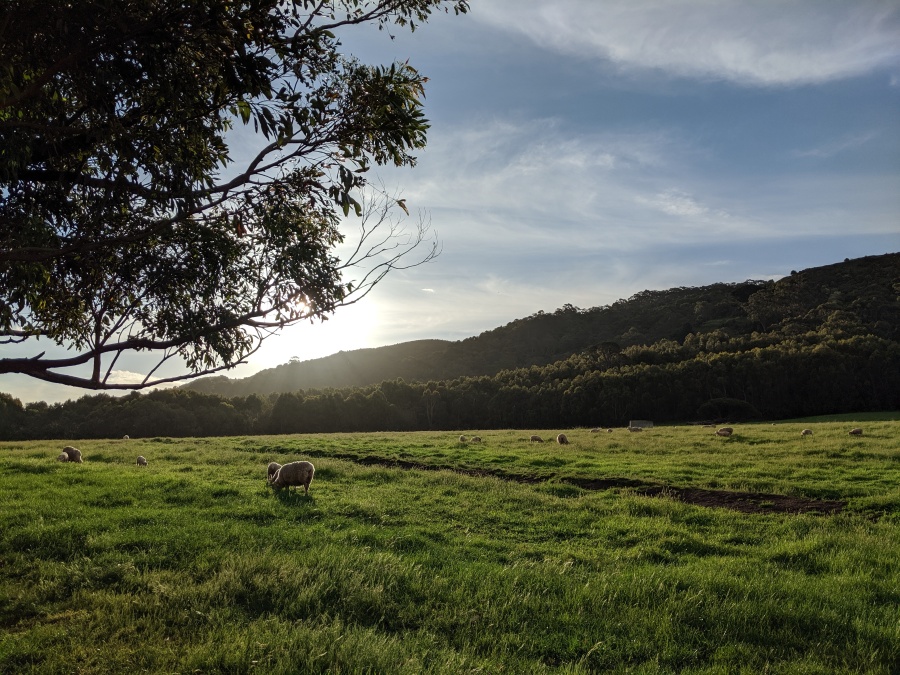
Miscellaneous Characters
Here are a few other folks I met in Australia:
- Ryan, one of my roommates in Port Douglas. He was in the country (travelling from Toronto) to present his Master’s thesis on simulating fluid dynamics at a conference here, and was taking a couple of weeks to travel at the back end of the conference. Back in Toronto, he said he didn’t mind his 1.5 hour each-way commute, because he takes the subway, and this affords him plenty of time to read. He says he gets through about a book per week, mainly sci-fi and history. Ryan got his Master’s degree paid for by his university, which I think is nearly unheard of in the US, where the funding flows mostly to PhD students, as they produce more research.
- Marielle, who gave up her job, her apartment, and her life as a dance instructor in the Netherlands, sold everything that couldn’t fit into a backpack, and took off for Australia for a few months, and then New Zealand, in a grand search of a better life. What a bold move - this is the spirit that Australia and America are built on!
- Mido, an Uber driver in Melbourne, an immigrant from Eritrea. He extolled to me Australia’s virtues, passionately explaining that it’s the best country. He says the people make the country - everyone’s friendly.
Miscellaneous Observations
My friend Patrick (or was it a friend of his?) says that “Australia is what California would be if it were its own country”. I think that’s glossing over a number of differences, but there is indeed a similar vibe to the two places. I think it comes out strongest in the laid-back vibe of both places, in looking to build the future, and in appreciating the natural beauty of the land.
Australia has some great slang and abbreviations that have literally made me laugh out loud at times. Here are some examples:
- brekky for breakfast
- sparky for electrician
- chippy for carpenter
- arvo for afternoon
- Mecca’s for McDonald’s
Parting Thoughts
There are still many more things I’d like to do in Australia, among them:
- Seeing Uluru
- Visiting Fraser Island
- Getting a campervan and taking my sweet time driving around
- Going on an epic off-roading tour around Queensland
- Going scuba diving at the Great Barrier Reef, and with sharks off Australia’s western coast
Guess I’ll be back then - see ya later, Australia!
Comments